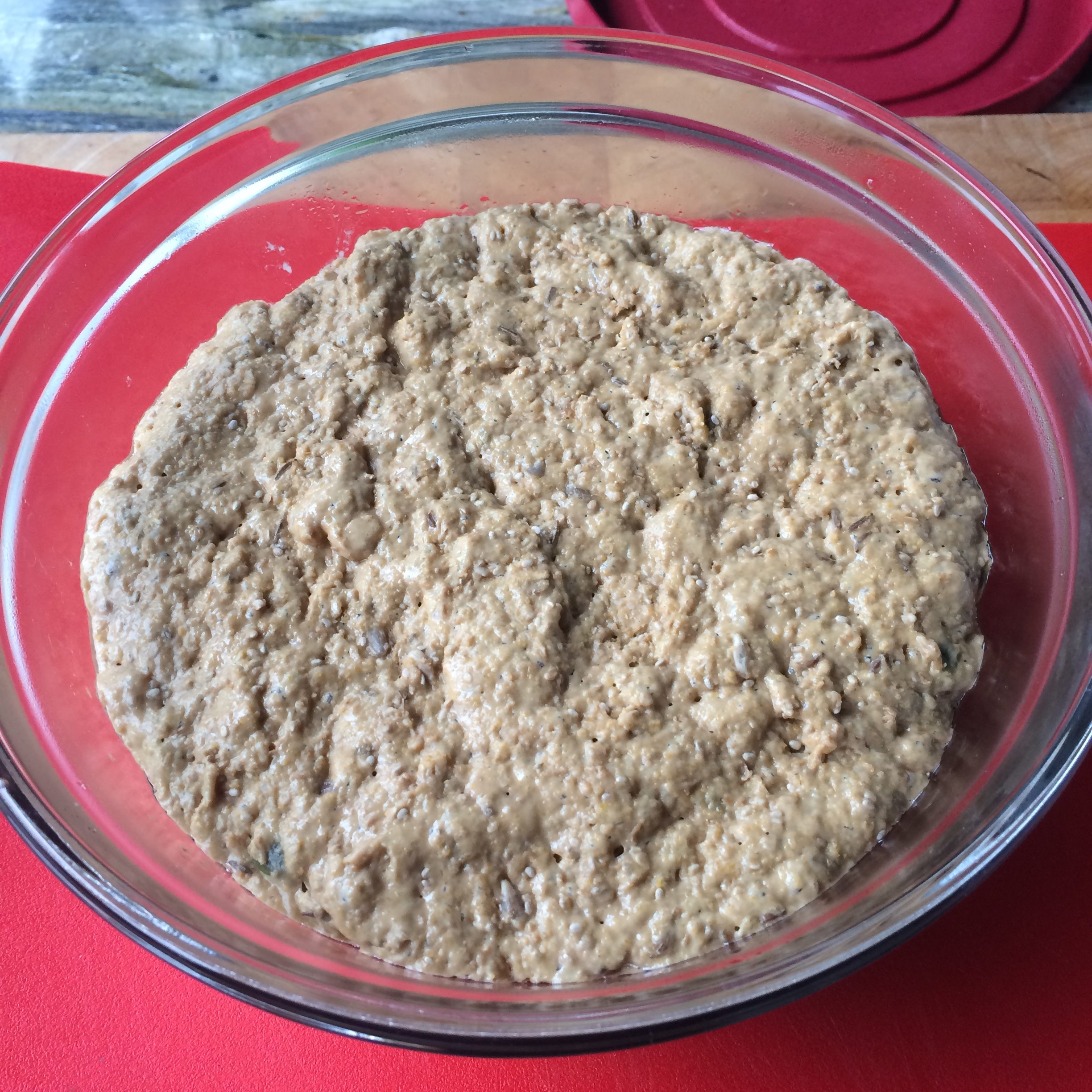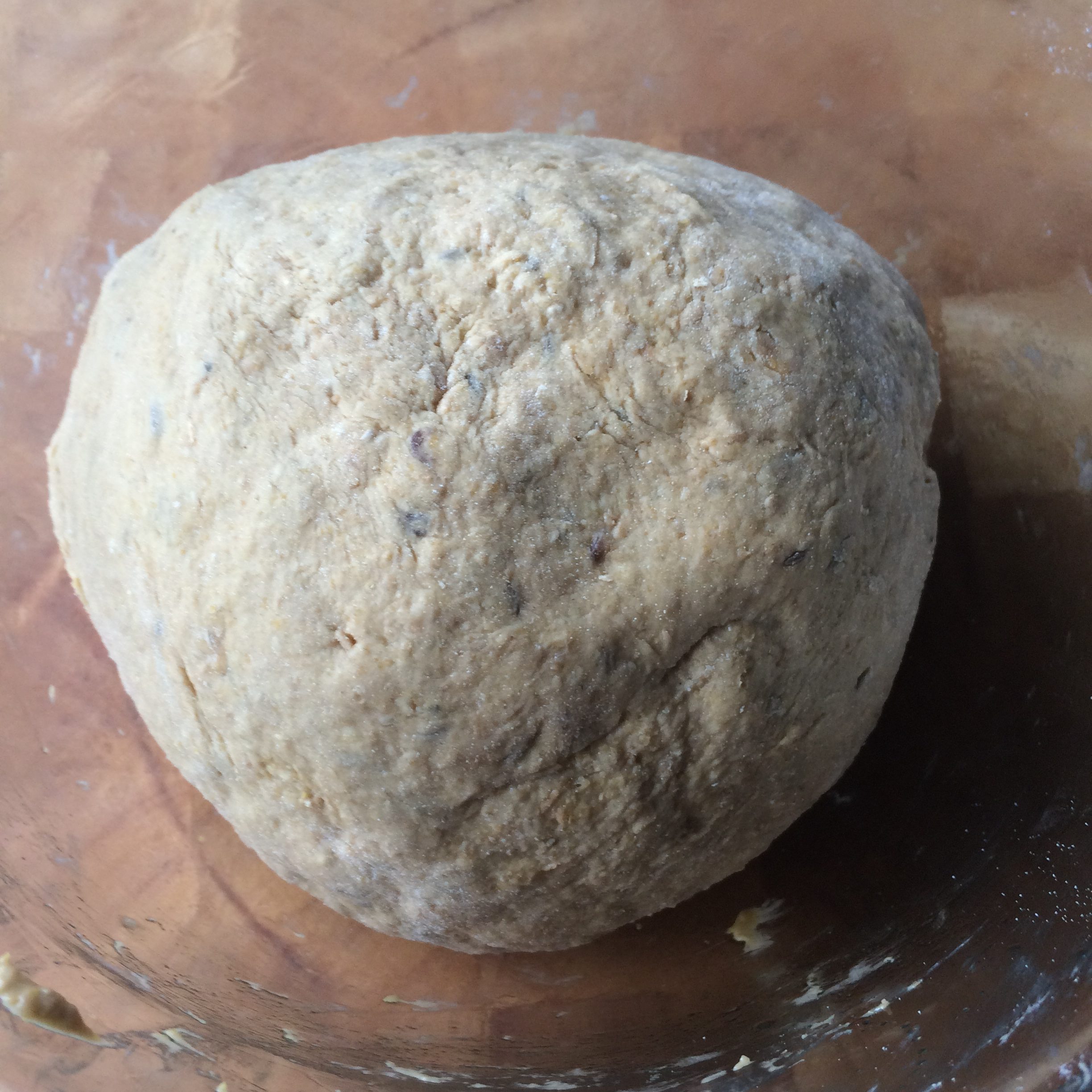
The finished product: freshly baked bread makes me happy.
I’m not sure how in middle age I have become a baker of bread, but it’s a welcome development. I remember marvelling every time a college classmate, Shelley, would make bread. It seemed mostly simple, somewhat complex and an awfully beautiful thing to do. But I never bothered trying myself.
Last year though, on Australia’s Masterchef, one of the judges, Matt Preston, showed the contestants how to make a very easy bread that you simply mix up, put in the refrigerator over night, and then bake the next day. I tried it a few times and it was good, but I was inspired last month to do more research.
I found a recipe in the New York Times and then see that a fellow named Jim Lahey has been inspiring thousands of folks around the world to be making bread, without kneading the dough. The trick seems to be using a Dutch oven (or a French oven, a Creuset or Chasseur), and heating it up beforehand.
The first version that I saw seemed to be done as quick as possible, in as little as five hours. I tried it out, and it was pretty good, though a little flat, and something wasn’t quite right. Then I followed some recipes that said you don’t have to bother with the Dutch oven, and in fact, a loaf pan helps give the bread a traditional rectangular shape. But I tried this, and didn’t like the crust.

Dry ingredients mixed with wet and put in a greased bowl for anywhere from 4 hours to overnight (and then some)
Finally, I watched a video where NYT’s Mark Bittman proposed to Mark Lahey that he could make a version in a few hours, rather than 14 to 20. I also tried out a few different flours in the hopes of making a bread with more whole-wheat flour. Harris Farm Markets was the saviour for finding rye flour: a kilo for $4 I think it was (it’s ridiculously expensive at About Life, and not available at all in Coles and Woolies). Bread with other flour than white flour is supposed to be a bit flatter and heavier. I’m still experimenting! I’d recommend the first time, just use white flour.
As much for my notes as to share with friends, here’s my favourite adaptation of Jim Lahey’s recipe, with various extra little tips.
Easy, tasty whole wheat and rye bread
(thanks to Jim Lahey and Mark Bittman)
1 cup of whole wheat flour (if you don’t have other flours, just use 2.5 cups of white flour)
1 cup of rye flour
1/2 cup of white flour
1/2 cup of corn meal (I love the texture that the corn meal adds to the bread)
1.5 tsp of salt
1 tsp of yeast
1.5 cups of hot water (apparently not too hot, which might kill the yeast)
1/4 tsp of red wine vinegar (Bittman’s innovation, said to speed the process, often missing from online recipes)
Mix the dry ingredients really well. Add the liquid and mix well. Transfer to an oiled bowl with a tight lid. Cover and rest at room temperature. Now, Mark Bittman says you can get away with 4 hours for this, but I’ve learned that there’s no rush for me. I’m happy to leave the dough overnight.
 Then, for the second rise, you can dump the dough out onto a cutting board, and fold it over a couple of times, and reshape into a ball. Some recipes say to shape it with oiled hands, others with floured hands. My dough has been a bit too sticky and wet so putting flour on my hands and shaping the dough is a good way to get it to a better consistency.
Then, for the second rise, you can dump the dough out onto a cutting board, and fold it over a couple of times, and reshape into a ball. Some recipes say to shape it with oiled hands, others with floured hands. My dough has been a bit too sticky and wet so putting flour on my hands and shaping the dough is a good way to get it to a better consistency.
 Then I put it back into the same bowl, which goes counter to all the recipes which say to leave it on a counter with a dish cloth over it, which strikes me as kind of messy (and unnecessary really; all it needs is a cover so it doesn’t dry out). When the dough has doubled again, it’s ready. Bittman says this can be as short as half an hour, but I don’t mind leaving it for a hour or so. Another way it’s ready, apparently, is if you stick your finger into the dough and the indentation stays there (which disappears during baking). However, I’ve read a disputed of this lately that says that there should be a little spring back. More experimentation is needed (as my bread is still a bit too dense).
Then I put it back into the same bowl, which goes counter to all the recipes which say to leave it on a counter with a dish cloth over it, which strikes me as kind of messy (and unnecessary really; all it needs is a cover so it doesn’t dry out). When the dough has doubled again, it’s ready. Bittman says this can be as short as half an hour, but I don’t mind leaving it for a hour or so. Another way it’s ready, apparently, is if you stick your finger into the dough and the indentation stays there (which disappears during baking). However, I’ve read a disputed of this lately that says that there should be a little spring back. More experimentation is needed (as my bread is still a bit too dense).
 In the meantime, half an hour before you’re ready, heat the dutch oven, lid on, in the oven at 230C. Many bakers worry that the plastic handle on the Creuset and Chasseur will melt, and is only good up to 220C. On advice from the interweb, I found you can buy a metal handle from Creuset that fits the Chasseur pot just fine (before that, I was wrapping the handle in aluminum foil).
In the meantime, half an hour before you’re ready, heat the dutch oven, lid on, in the oven at 230C. Many bakers worry that the plastic handle on the Creuset and Chasseur will melt, and is only good up to 220C. On advice from the interweb, I found you can buy a metal handle from Creuset that fits the Chasseur pot just fine (before that, I was wrapping the handle in aluminum foil).
After half an hour at 230C, take the Dutch oven out and put the dough in; it doesn’t matter what shape it goes as it will spread out a little. I sometimes sprinkle some chia seeds or sunflower seeds on top. You can slash the top with a knife if you’d like. Then it goes back into the oven with the lid on for half an hour. Then remove the lid and bake for another 15 minutes (recipes say up to 30 but I’ve never needed this). I sometimes check to see if the internal temperature is between 90 and 100C (I’m not so precise, should I be?) and then cool it on a rack.
And then of course, the most important part: eat some while it’s still hot. It is so good, it’s like another food group! It’s not quite the same the next day, but it is fine toasted! In the meantime, I’ve upped the complexity (and flavour) of my bread, and am experimenting with this Rye and Molasses Bread. And my better half is actually making sourdough bread, from a starter, which is much more complicated but I have to admit: much more delicious.

Pingback: Home cooking: rye and molasses no-knead bread | welcome to andyville